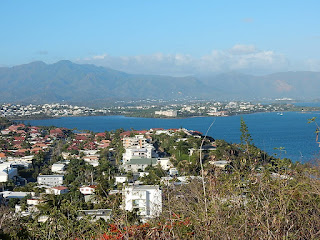 |
| Balaklava, SA |
In my younger life I used to travel regularly by road between
Australia’s capital cities. I never had any interest in stopping in any country
towns along the way. My young arrogant self assumed there was nothing or nobody
in these towns that would be of interest to me. I would rush through them to get
to the next big city as quickly as possible. I was usually planning to see
friends in these cities and these visits would typically involve live music,
drugs, alcohol, and long stimulating conversations.
I, and my friends were typically educated – often to university level,
intelligent, articulate and often left-leaning politically. We called people
who were conservative – perhaps right-wing voters and who did not take drugs –
‘straight’. This was not just a descriptive tag – it was also a derogatory slur.
It was assumed that we had little in common with such people and there’d be
little point in spending time with them. And it was assumed that country towns
would be full of such people. And I think too there might have been a feeling
of superiority: we thought ourselves better than them.
In the 1970s there was a significant divide between urban and rural
Australia. There is still a divide, but it is no longer a vast chasm. As a
traveller in the 70s for example you wouldn’t find a café with decent food or
coffee in the towns along the highway. There would be the roadhouse with pies,
pasties and chips and not much else. Country towns were for filling up with fuel,
bad food, and perhaps a short walk to stretch the legs.
As I grew older (and perhaps smarter) changes were afoot in rural
Australia. Increasingly a more engaged and socially aware cohort took up
residence in country towns. Food outlets with decent food and coffee started to
appear alongside the trusty roadhouses. Art and craft shops proliferated and
served as small galleries to display local goods and art works. Some towns like
Kimba in South Australia put more effort into making their towns destinations in
their own right rather than just transit locations. Accommodations improved and
provided more choice than just the
bog-standard hotel or motel.
The outward appearance of towns became more interesting. Older buildings
with possible heritage appeal were restored, plants appeared on footpaths, statues,
works of art, and information boards became more prominent and were more intent
on conveying the town’s story. There was more focus on offering meaningful
distractions to coax the traveller to stay a while. Larger towns had cinemas or
theatres suitable for live performances.
And the people started to look different. Country towns began to have
some residents who looked as if they could fit right in in places like St Kilda
or Paddington. They started to look like places where someone used to city life
could feel quite at home and find people there who they could identify with.
The gaping chasm between city and country life was closing.
Then some smart person hit upon the idea of silo art! Many Australian
towns are dominated by these very tall concrete towers that store grain. It
turns out that the surfaces of these vast structures make ideal canvases for
telling a story in pictures. So, in small towns like Coonalpyn between Adelaide
and Melbourne, for the first time ever tourists would stop to view the silo art
and maybe have a coffee or lunch at the café that sprang up across the road
from the silos. As other towns jumped on the same bandwagon the concept of Silo
Art trails was born, where one could now visit a chain of towns in reasonable
proximity and view all the different types of silo art available.
The arrival of the COVID-19 virus was a further step towards the
gentrification of Australia’s country towns. As people were encouraged to keep
their social distance from others many quickly realized that the best place to
do this was in country towns. Together with the technology that made working
from home an option for more and more of the workforce, many urban dwellers
upped sticks and relocated to the country.
I don’t know if rural people feel any resentment towards these city
interlopers, but the net result of these incremental changes over the last 5
decades and this more sudden COVID induced population transfer means that for
me country towns are now far more worth a visit. I don’t feel they’ve lost their
soul or too much of their rustic character, and they have become places where I no longer feel like an alien when I walk
down the main street. I did once.
I acknowledge that this in part may be because of my youthful
insecurities, and a somewhat biased blindness towards country life that
lessened as I grew older. Perhaps country towns always had these attractions
(theatre, food, culture etc) and I just never stayed long enough to notice.




















